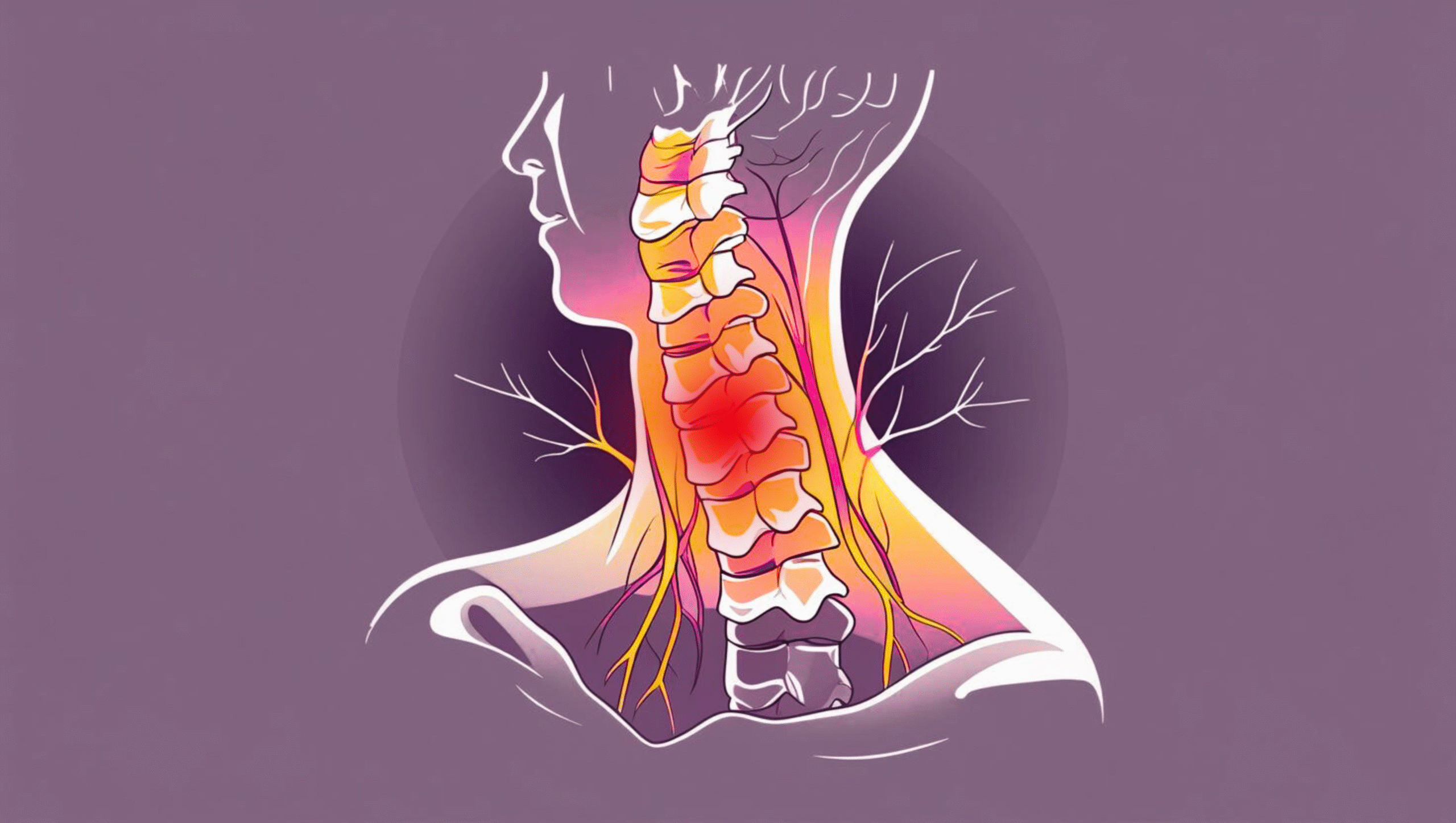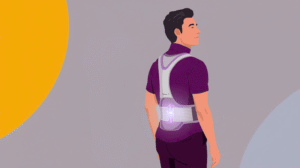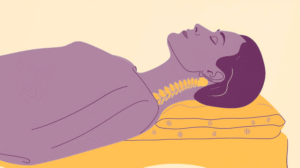Chronic neck pain can be more than just a nuisance — for many, it’s a debilitating condition that affects daily life, productivity, and emotional well-being. One of the most common and often overlooked causes of chronic neck pain is nerve compression, also known as cervical radiculopathy.
This article explains how compressed nerves in the neck can lead to chronic pain, what causes it, how it’s diagnosed, and the available treatment and prevention strategies.
What Is a Compressed Nerve in the Neck?
The human spine is composed of 33 vertebrae, of which the top seven form the cervical spine — the neck region. Between these vertebrae are intervertebral discs and nerve roots that exit the spinal cord to supply the shoulders, arms, and upper chest.
When one of these nerve roots is compressed, due to disc herniation, bone spurs, or other structural changes, it can cause radiating pain, numbness, tingling, or weakness in the neck, shoulders, and arms. This is known as cervical radiculopathy.
How Does Nerve Compression Cause Chronic Neck Pain?
When a nerve root is compressed or irritated, it causes inflammation and disrupts the normal electrical signals between the brain and muscles. Over time, if untreated, this pressure can lead to persistent nerve damage, inflammation, and chronic pain patterns that are difficult to reverse.
Pain is typically:
- Radiating: Starting in the neck and traveling down the arm.
- Persistent: Lasting more than 3 months.
- Neuropathic: Tingling, burning, or electric-like sensations.
Common Causes of Compressed Nerves in the Neck
Several factors can cause chronic nerve compression in the cervical spine:
1. Herniated Disc
A disc may bulge or rupture, pressing against nearby nerve roots.
2. Degenerative Disc Disease
As we age, discs lose hydration and height, leading to narrowing of space around nerves.
3. Bone Spurs (Osteophytes)
Bony overgrowths from arthritis can crowd the spinal canal or foramina.
4. Cervical Spinal Stenosis
Narrowing of the spinal canal that puts pressure on nerve roots or the spinal cord.
5. Injury or Trauma
Sudden impact (e.g., whiplash, falls) can misalign the cervical vertebrae and compress nerves.
6. Poor Posture
Prolonged forward head posture (e.g., while looking at phones or laptops) can stress the cervical spine.
Symptoms of Chronic Neck Pain from Nerve Compression
The symptoms vary depending on which nerve is compressed, but they often include:
- Persistent neck pain and stiffness
- Shooting pain down the shoulder, arm, or fingers
- Tingling or numbness in the hand or arm
- Muscle weakness in the upper limbs
- Limited range of motion
- Headaches at the base of the skull
- Worsening symptoms with certain head positions or movements
When to See a Doctor
Seek medical attention if:
- Pain persists for more than a few weeks
- You experience numbness, tingling, or weakness
- Pain interferes with sleep, work, or daily activities
- Over-the-counter medications and home remedies don’t help
Diagnosis of Compressed Nerves in the Neck
A thorough diagnosis typically includes:
1. Physical Examination
A physician may assess posture, reflexes, muscle strength, and range of motion.
2. Neurological Tests
Includes nerve conduction studies or electromyography (EMG) to measure electrical activity in the muscles.
3. Imaging Tests
- X-rays: Show bone alignment and signs of arthritis.
- MRI: Best for visualizing soft tissue, disc herniation, and nerve compression.
- CT Scan: Often combined with a myelogram for detailed spine imaging.
Treatment Options for Chronic Neck Pain from Nerve Compression
1. Conservative Management
Most cases can be managed without surgery.
a. Physical Therapy
- Strengthens neck, shoulder, and back muscles
- Improves posture and flexibility
- Reduces nerve irritation
b. Medications
- NSAIDs for inflammation (e.g., ibuprofen)
- Oral corticosteroids for flare-ups
- Muscle relaxants for spasms
- Neuropathic pain medications (e.g., gabapentin)
c. Cervical Traction
Gently stretches the neck to reduce nerve pressure and relieve pain.
d. Lifestyle Modifications
- Ergonomic workstation setup
- Frequent posture breaks
- Proper pillow and sleep position
- Avoiding heavy lifting or straining
e. Epidural Steroid Injections
For severe pain, injections can reduce inflammation around nerve roots.
2. Surgical Options
If conservative treatments fail after 6–12 weeks, or if there is significant weakness or neurological decline, surgery may be recommended.
Common procedures:
- Anterior cervical discectomy and fusion (ACDF)
- Cervical disc replacement
- Laminectomy or foraminotomy
Surgery aims to relieve pressure on the nerve root and stabilize the spine.
Prevention Tips
Chronic neck pain isn’t always avoidable, but the following habits can reduce the risk:
1. Maintain Good Posture
Keep ears aligned with shoulders and avoid forward head tilt.
2. Ergonomic Work Setup
- Screen at eye level
- Supportive chair with neck and lumbar support
- Take breaks every 30 minutes
3. Strengthen Neck and Upper Back Muscles
Regular exercise helps support spinal alignment and absorb physical stress.
4. Stretch Regularly
Neck, shoulder, and thoracic spine stretches improve mobility and circulation.
5. Avoid Cradling the Phone
Use headphones or speakerphone to prevent strain.
6. Proper Sleep Posture
- Use a cervical pillow
- Avoid sleeping on your stomach
- Sleep on your back or side with neck support
Outlook and Quality of Life
With early diagnosis and treatment, most people with cervical radiculopathy recover fully or significantly improve. Physical therapy and posture correction are often enough to relieve pain and restore function.
However, ignoring symptoms or delaying treatment can lead to worsening nerve damage and long-term disability. It’s important to listen to your body, make ergonomic adjustments, and seek professional care when needed.
Conclusion
Chronic neck pain due to compressed nerves is a common but manageable condition. Understanding its causes, such as herniated discs, spinal stenosis, or poor posture — empowers you to take preventive and corrective actions. With a combination of medical care, physical therapy, lifestyle adjustments, and ergonomic practices, you can relieve symptoms, prevent further damage, and improve your long-term spinal health.
References:
- Cleveland Clinic. (2021). Cervical radiculopathy (pinched nerve). https://my.clevelandclinic.org/health/diseases/11866-cervical-radiculopathy
- Mayo Clinic. (2021). Herniated disk. https://www.mayoclinic.org/diseases-conditions/herniated-disk/symptoms-causes/syc-20354095
- National Institute of Neurological Disorders and Stroke. (2020). Low back pain fact sheet. https://www.ninds.nih.gov/Disorders/Patient-Caregiver-Education/Fact-Sheets/Low-Back-Pain-Fact-Sheet
- American Academy of Orthopaedic Surgeons. (2020). Cervical radiculopathy (pinched nerve). https://orthoinfo.aaos.org/en/diseases–conditions/cervical-radiculopathy-pinched-nerve
- Harvard Health Publishing. (2019). What is cervical radiculopathy? https://www.health.harvard.edu/pain/what-is-cervical-radiculopathy
- National Institutes of Health. (2020). Neck pain. https://www.niams.nih.gov/health-topics/neck-pain
- Centers for Disease Control and Prevention. (2021). Ergonomics and musculoskeletal disorders. https://www.cdc.gov/niosh/topics/ergonomics/
- American Physical Therapy Association. (2020). Neck pain: PT management. https://www.choosept.com/symptomsconditionsdetail/physical-therapy-guide-to-neck-pain























